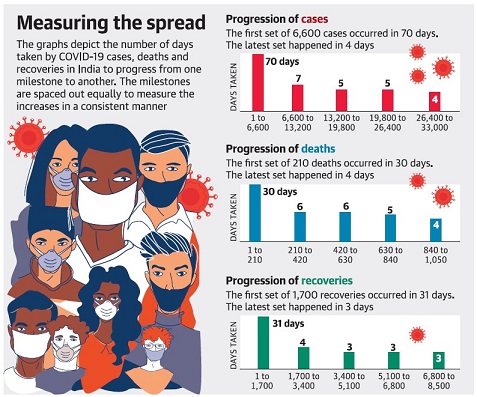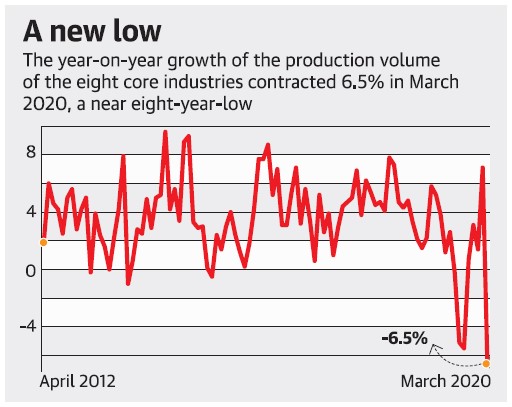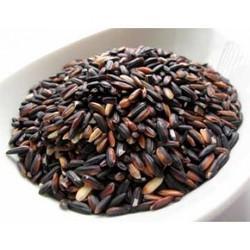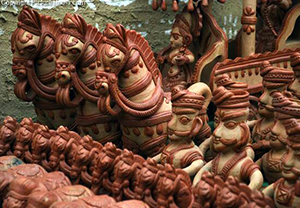Contents
- Recovery rate rises to 25%, says government
- March 2020 core sector output slumps 6.5%
- Plan to extend CAT opposed
- GI tag to Manipur black rice, Gorakhpur terracotta, Kovilpatti kadalai mittai
- Oman job cuts not India-specific: Centre
- Coronavirus is pulling millions back into poverty
RECOVERY RATE RISES TO 25%, SAYS GOVERNMENT
Focus: GS-III Disaster Management
Why in news?
The Union Health Ministry said, on 30th April, that India is currently recording a total recovery rate of 25.19% up from 13% about two weeks ago.
Details

- Giving details on the percentage of deaths in various age groups, the Ministry said India has a case fatality rate of 3.2% currently which is 65% male and 35% female.
- The Ministry added that analysis of doubling rate across the country has revealed that the national average is 11 days presently as compared to 3.4 days before lockdown.
- The Ministry said no health facility should prescribe additional COVID-19 testing for non-COVID patients, causing unwanted delay in treatment for critical patients.
- The Ministry reiterated that as of now there is no confirmed treatment protocol for COVID-19 and that Remdesivir is one protocol which is being examined.
- However, the Ministry has issued a detailed advisory on the use of hydroxychloroquine as prophylaxis 19 and availability of HCQ is being ensured
MARCH 2020 CORE SECTOR OUTPUT SLUMPS 6.5%
Focus: GS-III Industry and Infrastructure, Indian Economy
Why in news?
The Output at India’s core sector contracted by 6.5% in March, Commerce Ministry data show, reflecting the early impact of the COVID-19 pandemic and the subsequent nationwide lockdown.
The index of eight core sector industries, which form 40% of the weight of items included in the broader Index of Industrial Production (IIP), reflected a contraction in key parts of the economy in March, according to the data released on 30th April 2020.

Details
Leading the contraction at the core industries were a 13% decline in steel output, and a 7% fall in electricity generation. The two sectors account for almost 40% of the index. Cement production crashed 25%, while natural gas production slid 15%, the data showed. Fertiliser production also fell 12%, while crude oil production slipped 5.5%.
Grim Future
These trends are expected to worsen slightly but within the same magnitude during April, noting that demand has fallen drastically in the power sector due to the full lockdown this month, and gas-powered plants were likely to have been shut down. Coal may also dip for April, while cement production will fall sharply as all construction activity came to a halt.
Read More about the Background information about IIP And Core Industries here: https://www.legacyias.com/pib-30th-april/
(2nd Article in PIB Summary)
PLAN TO EXTEND CAT OPPOSED
Focus: GS-II Governance
Why in news?
There was opposition against the decision to extend the jurisdiction of the Central Administrative Tribunal (CAT), Chandigarh, to the Union Territory of Jammu and Kashmir to hear the cases of employees for redress.
Why were they against it?
- Shifting of all pending service-related matters from both wings of the High Court in Jammu and in Kashmir to the CAT will hit the advocates of the Union Territory in particular and the public in general.
- The aggrieved employees of J&K shifting the service matters to the CAT at Chandigarh, for adjudication is simply a travesty of justice.
- It is bound to prove a tedious and costly affair for almost all these litigants, which will surely defeat the purpose of constitutionally guaranteed justice at doorstep of the citizens.
Read more about the CAT here: https://www.legacyias.com/press-statement-from-central-administrative-tribunal/
GI TAG TO MANIPUR BLACK RICE, GORAKHPUR TERRACOTTA, KOVILPATTI KADALAI MITTAI
Focus: GS-III Environment and Ecology
Why in news?
Chak-Hao, the black rice of Manipur, the Gorakhpur terracotta, Kovilpatti kadalai mittai have bagged the Geogrphical Indication (GI) tag in 30th April 2020.
Chak-Hao

- Chak-Hao is a scented glutinous rice which has been in cultivation in Manipur over centuries and is characterised by its special aroma.
- It is normally eaten during community feasts and is served as Chak-Hao kheer.
- Chak-Hao has also been used by traditional medical practitioners as part of traditional medicine.
- This rice takes the longest cooking time of 40-45 minutes due to the presence of a fibrous bran layer and higher crude fibre content.
Gorakhpur terracotta

- The terracotta work of Gorakhpur is a centuries-old traditional art form, where the potters make various animal figures like, horses, elephants, camel, goat, ox, etc. with hand-applied ornamentation.
- The entire work is done with bare hands and artisans use natural colour, which stays fast for a long time.
- The craftsmen are mainly spread over the villages of Aurangabad, Bharwalia, Langadi Gularia, Budhadih, Amawa, Ekla etc.
Kovilpatti kadalai mittai

- Kovilpatti kadalai mittai is manufactured in Kovilpatti and adjacent towns and villages in Thoothukudi district.
- Kovilpatti kadalai mittai is a candy made of peanuts held together with glistening syrup of Jaggery and it has a long shelf life and has a huge export potential.
- For decades, the Kovilpatti kadalai mittai was traditionally prepared during village festivals using palm jaggery and groundnuts from nearby districts.
GI Tag
- A geographical indication (GI) is a name or sign used on certain products which corresponds to a specific geographical location or origin (e.g., a town, region, or country).
- India, as a member of the World Trade Organization (WTO), enacted the Geographical Indications of Goods (Registration and Protection) Act, 1999 has come into force with effect from 15 September 2003.
- GIs have been defined under Article 22 (1) of the WTO Agreement on Trade-Related Aspects of Intellectual Property Rights (TRIPS) Agreement as: “Indications which identify a good as originating in the territory of a member, or a region or a locality in that territory, where a given quality, reputation or characteristic of the good is essentially attributable to its geographic origin.“
- The GI tag ensures that none other than those registered as authorised users (or at least those residing inside the geographic territory) are allowed to use the popular product name.
- Darjeeling tea became the first GI tagged product in India, in 2004–2005.
- GI protection systems restrict the use of the GIs for the purpose of identifying a particular type of product, unless the product and/or its constituent materials and/or its fabrication method originate from a particular area and/or meet certain standards.
- Sometimes these laws also stipulate that the product must meet certain quality tests that are administered by an association that owns the exclusive right to license or allow the use of the indication.
Geographical Indications Registry (GIR)
- As per the Geographical Indication of Goods (Registration and Protection) Act, 1999 , association of persons or producers can apply for GIs for specific products supported by required documents.
- The Controller General of Patents, Designs & Trade Marks (CGPDT), (under the Dept. of Industrial Policy and Promotion of Ministry of Commerce and Industry) is the ‘Registrar of Geographical indications’.
- The CGPDT directs and supervises the functioning of the Geographical Indications Registry (GIR).
OMAN JOB CUTS NOT INDIA-SPECIFIC: CENTRE
Focus: GS-II International Relations
Why in news?
There are reports of continued job cuts in several Gulf countries, including Oman, which has instructed government-owned companies to replace expat workers “as quickly as possible” with Omanis.
Amidst these reports, expat Indian citizens have played a significant role in creating prosperous economies in the Gulf region, the External Affairs Ministry said on 30th April 2020.
Significance of the order
- There are at least 8,00,000 Indian workers in the kingdom and a part of them are likely to be impacted by the order.
- The Omani order, when carried out, is expected to force significant part of the expat Indians to return home.
- In view of the COVID-19 outbreak in the Gulf states and the accompanying regional economic downturn, India is already preparing to evacuate a large number of citizens from the Gulf.
- Sultan of Oman Haitham bin Tarik had assured Prime Minister Narendra Modi that the salaries and well-being of the Indian community would be protected as the country dealt with the economic downturn that had resulted from the COVID-19 pandemic.
Ministry’s view on the order
- The Gulf countries greatly value their relation with India.
- They also value the role of the Indian diaspora in the development of the region.
- The policy of Oman is not specific to India and it does not target Indians.
Strategic partner
- Oman has been a strategic partner of India, and a large number of local workers are from South Asia.
- Diplomatic sources said the order was not connected to the ongoing pandemic-related economic downturn in the Gulf.
- Oman has been part of India’s international consultations on the pandemic.
CORONAVIRUS IS PULLING MILLIONS BACK INTO POVERTY
Focus: GS-III Indian Economy
Introduction to expected increase in Poverty
The gains the world was making in fighting poverty are now at grave risk.
- The World Bank says that for the first time since 1998, global poverty rates will rise.
- By the end of the year 2020, 8% of the world’s population — half a billion people — could be pushed into destitution, largely because of the wave of unemployment brought by virus lockdowns.
- The financial shock waves could linger even after the virus is gone.
Who will be hit the hardest?
- The developing world will be hardest hit.
- The World Bank estimates that sub-Saharan Africa will see its first recession in 25 years, with nearly half of all jobs lost across the continent.
- South Asia will likely experience its worst economic performance in 40 years.
- Informal Sector: Most at risk are people working in the informal sector, which employs 2 billion people who have no access to benefits like unemployment assistance or health care.
Gains lost
- The gains now at risk are a stark reminder of global inequality and how much more there is to be done.
- In 1990, 36% of the world’s population, or 1.9 billion people, lived on less than $1.90 a day.
- By 2016, that number had dropped to 734 million people, or 10% of the world’s population, largely because of progress in South Asia and China.
- Some of the biggest gains were made in India, where 210 million people were lifted out of poverty from 2006 to 2016, according to the UN.
- But all this progress may be reversed, experts worry, and funding for anti-poverty programmes may be cut as governments struggle with stagnant growth rates or economic contractions as the world heads for a recession.





